

Most lunar observers avoid full Moon because the lack of shadows makes the Moon look featureless. However one can get images which are distinctly different from the norm and show details in a different way. This has been illustrated by the LPOD for 22nd November 2006. So here I present a series of pictures taken within 4 hours of full Moon. The pictures were taken in colour with a view to producing exagerated-colour images, but most of these turned out to be very unsatisfactory. The few that might show something of interest are presented below as mouseovers.
The pictures were all taken on 7 September 2006 between 20:38 and 22:50. Libration was almost neutral at the time being only -14' in longitude and 2° 14' in latitude, meaning that the north pole is very slightly inclined towards us.
I have not provided my normal mouseover images with identification of the features because, frankly, I have found it very difficult to be sure of just what is what. I indicate my best estimates in the text beside each image and the picture itself is a link to another page showing the same general area that may help with identification.
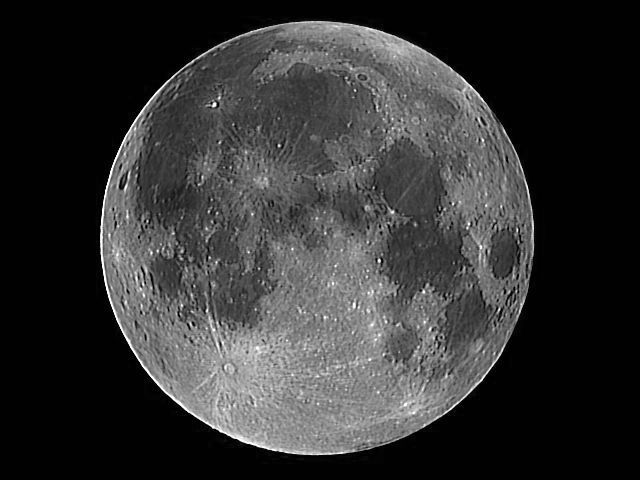
The Full Moon.
Date and Time: 7th September 2006 20:38 UT
Camera: ToUcam 740K
Telescope: 270 mm SLR lens
Capture: K3CCDTools. Low gamma, 1/250", 8% gain, 604 frames
Processing: Registax. 17 alignment points, 601 frames stacked. Wavelets 1 = 10, 2 = 5, gamma 1.3, histogram 0-233
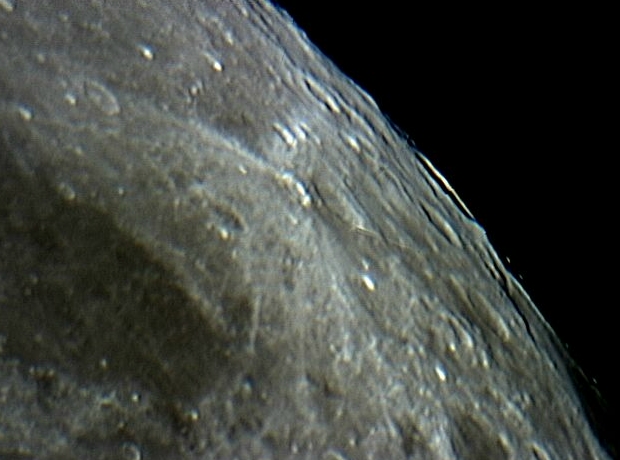
The far north-east. The crater right on the limb is. I believe, Hayn at 82°.5 east. The small, bright crater near the centre of the image with a bright ray towards the upper-left corner of the picture is Thales (was it formed by an oblique impact?) and the larger one near it is Strabo. I do not have another image showing just this area, but Strabo is included in the bottom image on the page linked to this picture.
Date and Time: 7th September 2006 22:42 UT
Camera: ToUcam 740K
Telescope: LX200 at prime focus
Capture: K3CCDTools. Low gamma, 1/250", 16% gain, 316 frames
Processing: Registax. 13 alignment points, 283 frames stacked. Wavelets 1,2 = 10, histogram 50-200
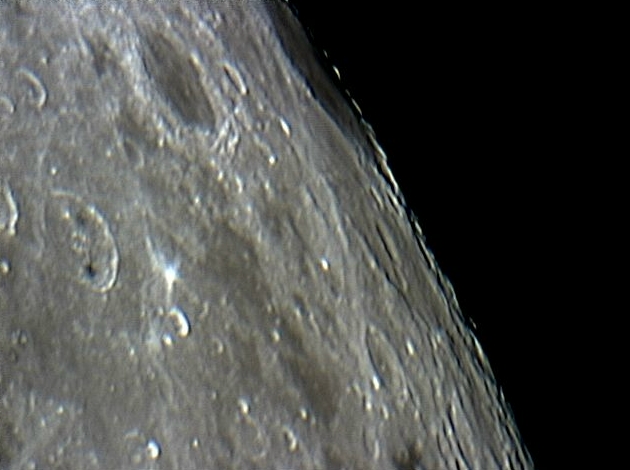
This is just south of the picture above. The dark patch in the centre of the Moon at the top of the picture is Endymion, with Atlas below and to the left of it. The dark area right on the limb is the Mare Humboldtianum, one of only two maria named after people (the other is Mare Smythii). Alexander van Humboldt (1769-1859) was an explorer and Mädler gave his name to this mare as a symbolic parallel between his exploration of unknown lands on Earth and the way that this mare seems to link the known side of the Moon with the (then) unknown side.
I had some difficulty identifying the searchlight to the right of Atlas. Neither Rükl nor the VMA seem to show anything in that location, but Hatfield shows the bright spot and identifies it as a mountain and labels it ε. What is interesting is that the spot shows clearly on Hatfield's image at 7.3 days, when the libration was very unfavorable but not on his image at 14.9 days (which corresponds much more closely to my image) when the libration was very favorable. All my other images of this area (click on the image) show a mountain in that position. The coloured image shows that the spot is divided into two parts.
Date and Time: 7th September 2006 22:44 UT
Camera: ToUcam 740K
Telescope: LX200 at prime focus
Capture: K3CCDTools. Low gamma, 1/250", 16% gain, 305 frames
Processing: Registax. 25 alignment points, 302 frames stacked. Wavelets 1,2 = 10, gamma 1.3, histogram 22-170
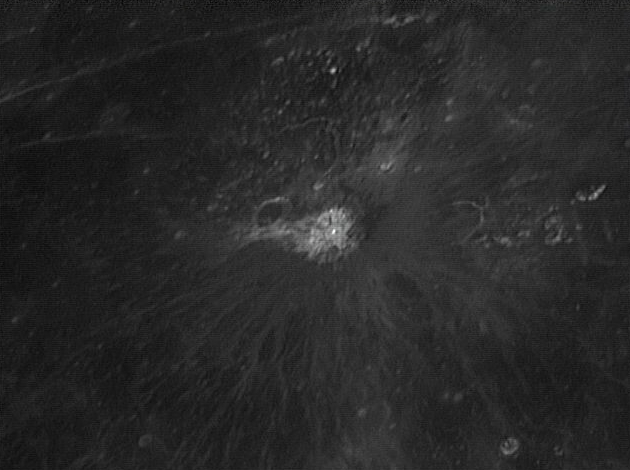
Aristarchus, the brightest crater on the Moon, shows up well on this high-sun picture. Even Schröter's valley shows quite clearly on this otherwise rather dark image. Enhancing the colours here gave no useful information but there is a good coloured image on the page linked to this picture.
Date and Time: 7th September 2006 22:25 UT
Camera: ToUcam 740K
Telescope: LX200 at prime focus
Capture: K3CCDTools. Low gamma, 1/50", 20% gain, 324 frames
Processing: Registax. 163 frames stacked. Wavelets 1,2 = 10, contrast 170, brightness -20.
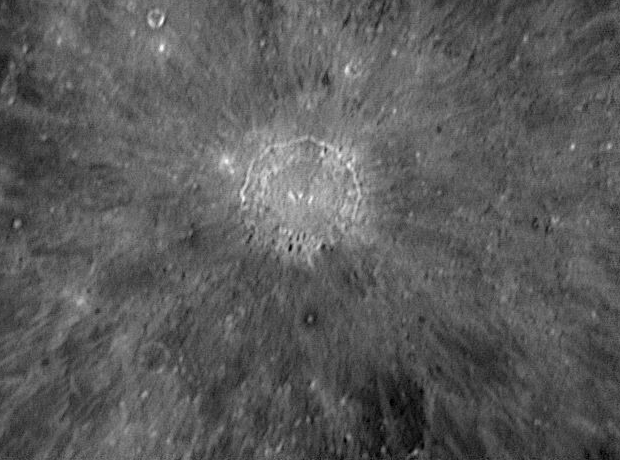
One of the youngest major cratrers on the Moon, Copernicus is less than a thousand million years old and gives it's name to a period in lunar history from 1,100 million years ago to the present. I was surprised how well it shows up at high noon; even its blanket of ejecta shows up clearly.
Date and Time: 7th September 2006 22:36 UT
Camera: ToUcam 740K
Telescope: LX200 at prime focus
Capture: K3CCDTools. Low gamma, 1/250", 0% gain, 307 frames
Processing: Registax. 57 frames stacked. Wavelets 1,2 = 10, gamma 1.3, histogram 60-255, brightness -10.
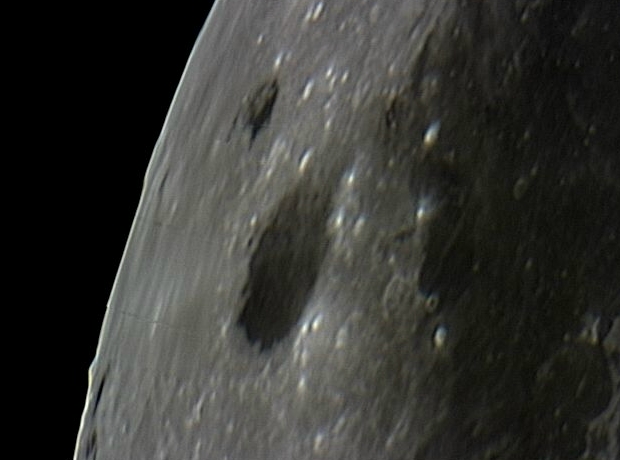
The big dark spot in the middle of this picture is Grimaldi, a large crater largely flooded with lava. Just above it is the less-flooded Riccioli. This picture was taken only one day later than the first picture on my main page (click on the image), but what a difference in visible detail! Are those the D'Alambert or the Cordillera mountains on the horizon?
Date and Time: 7th September 2006 22:50 UT
Camera: ToUcam 740K
Telescope: LX200 at prime focus
Capture: K3CCDTools. Low gamma, 1/250", 16% gain, 304 frames
Processing: Registax. 11 alignment points, 301 frames stacked. Wavelets 1,2 = 10, gamma 1.2, histogram 30-190.
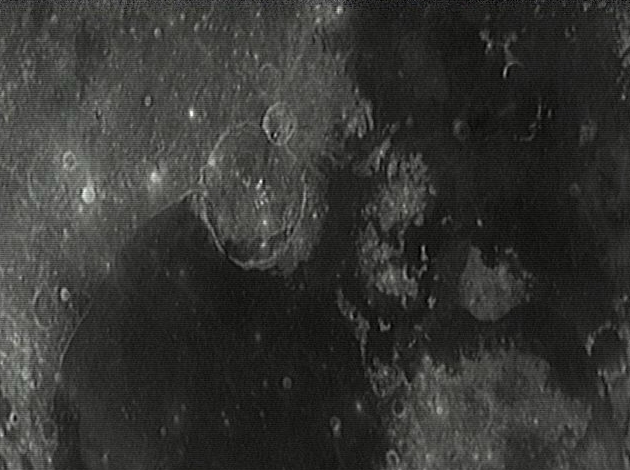
Gassendi, and parts of Mare Humorum (below) and Mare Nubium (to the right).
Date and Time: 7th September 2006 22:20 UT
Camera: ToUcam 740K
Telescope: LX200 at prime focus
Capture: K3CCDTools. Low gamma, 1/25", 24% gain, 571 frames
Processing: Registax. 109 frames stacked. Wavelets 1,2 = 10, contrast 170, brightness -30.
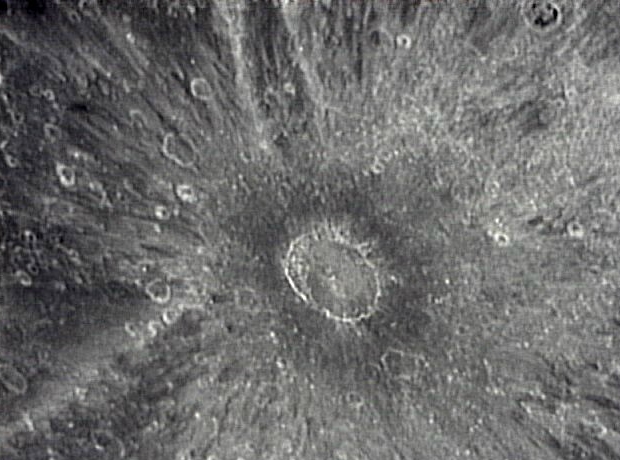
Tycho, a young crater and the origin of the most spectacular system of rays on the Moon, clearly visible on the whole-moon image at the top of this page. I took a very similar picture in November 2005, only 0.6 of a day later than this one, which yielded a good colour image. (Clicking on the image should take you directly to that picture.)
Date and Time: 7th September 2006 22:18 UT
Camera: ToUcam 740K
Telescope: LX200 at prime focus
Capture: K3CCDTools. Low gamma, 1/25", 23% gain, 496 frames
Processing: Registax. 148 frames stacked. Wavelets 1,2 = 10, histogram 80-160
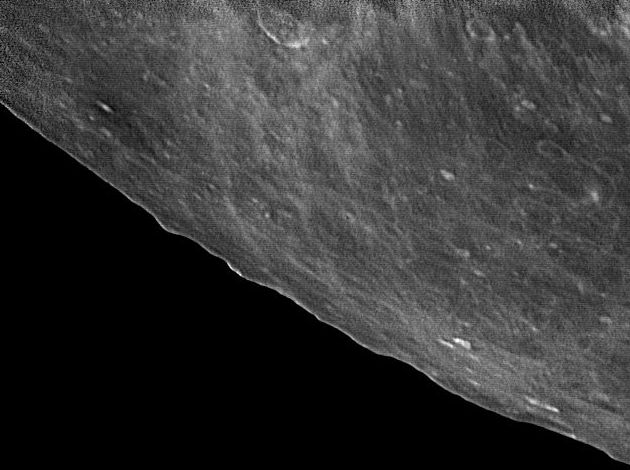
This picture is of the south-west limb, but exactly where is it? After I first expressed my doubts, Jim Mosher used his remarkable Lunar Terminator Visualization Tool to identify all the features shown in the picture (and prove my guesses wrong!). The picture he produced is shown in the mouseover. I am very grateful to Jim for annotating my picture for me. I'm still not sure what the mountains are on the limb, but my best guess is the rim of either Cabeus A or B.
Date and Time: 7th September 2006 22:10 UT
Camera: ToUcam 740K
Telescope: LX200 at prime focus
Capture: K3CCDTools. Low gamma, 1/100", 21% gain, 299 frames
Processing: Registax. 112 frames stacked. Wavelets 1,2 = 10,gamma 0.6, histogram 40-200 Home Back to Moon